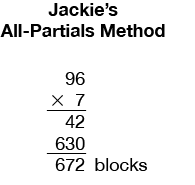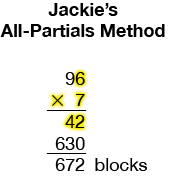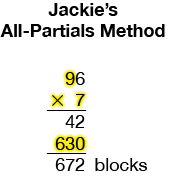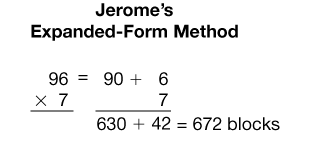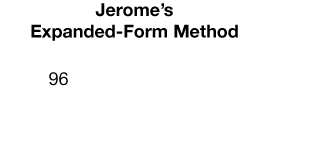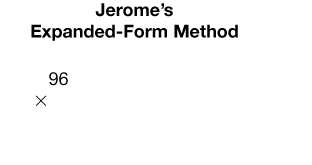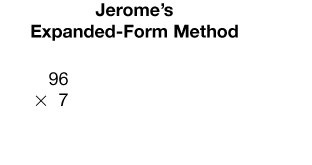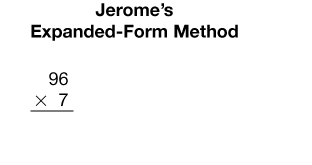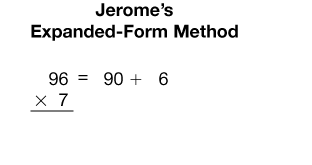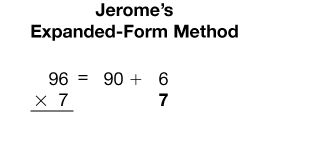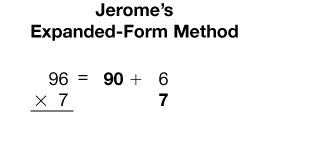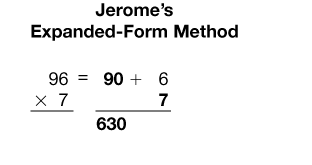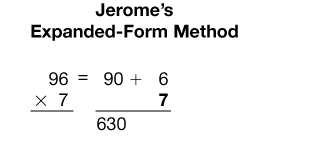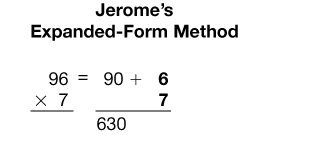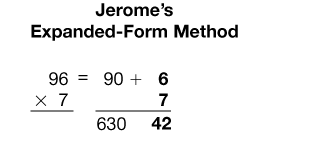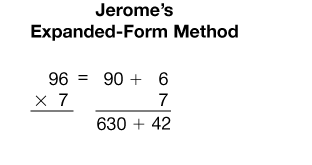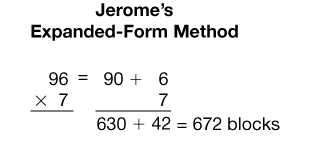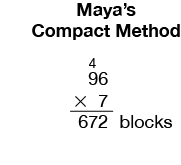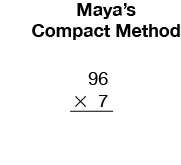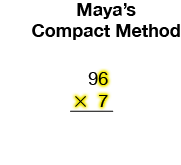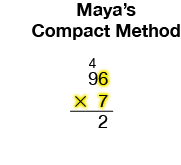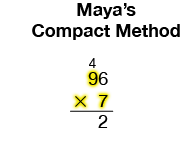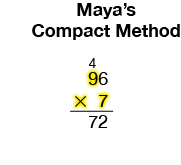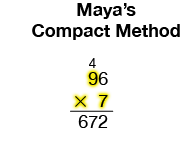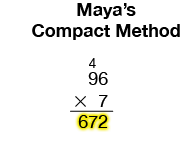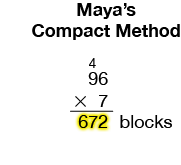LESSON 4 Compact Multiplication Revisited
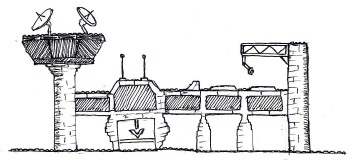
Jackie, Jerome, and Maya are building a model city for the moon using snap-together blocks. They ran out of blocks, so they put their money together to buy more. A new box holds 96 blocks. They have enough money to buy 7 boxes.
- Jerome said, “That will give us almost 700 new blocks.”
- What numbers did Jerome use to estimate?
- Why does he think the total will be less than 700 blocks? Why not more than 700 blocks?
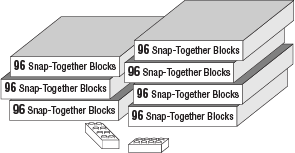
Jackie, Jerome, and Maya solved the problem using the three different methods shown below. Compare their methods to each other.
- Review Jackie's method. Tell what numbers she multiplied to find each partial product.
- Do the same for Jerome's method.
Maya began by multiplying 7 6 = 42. She knows 42 is 4 tens and 2 ones. She wrote the 2 in the ones place and put a small 4 above the tens place as a reminder that she had 4 tens. This small 4 is sometimes called a carry. It reminds Maya to add 4 tens in the next step. Maya then multiplied
7 9 tens = 63 tens and added the 4 tens from her reminder to get 67 tens. She knows this is the same as 670, or 6 hundreds and 7 tens, so she put the 7 in the tens place. She then put the 6 in the hundreds place because she had no more partial products to multiply.
- How are Jackie's and Maya's methods alike? How are they different?
- How are Jerome's and Maya's methods alike? How are they different?















